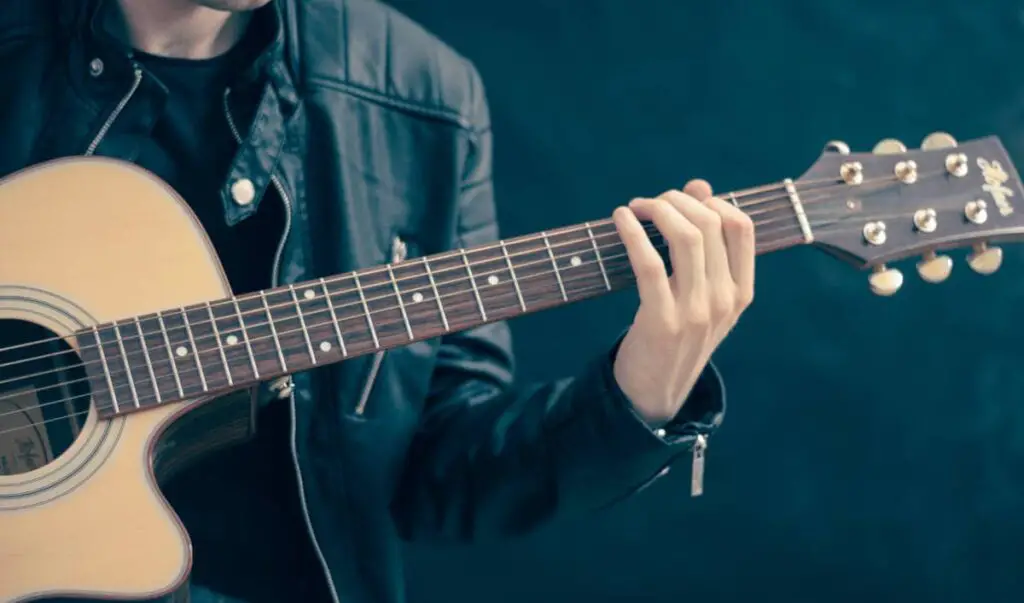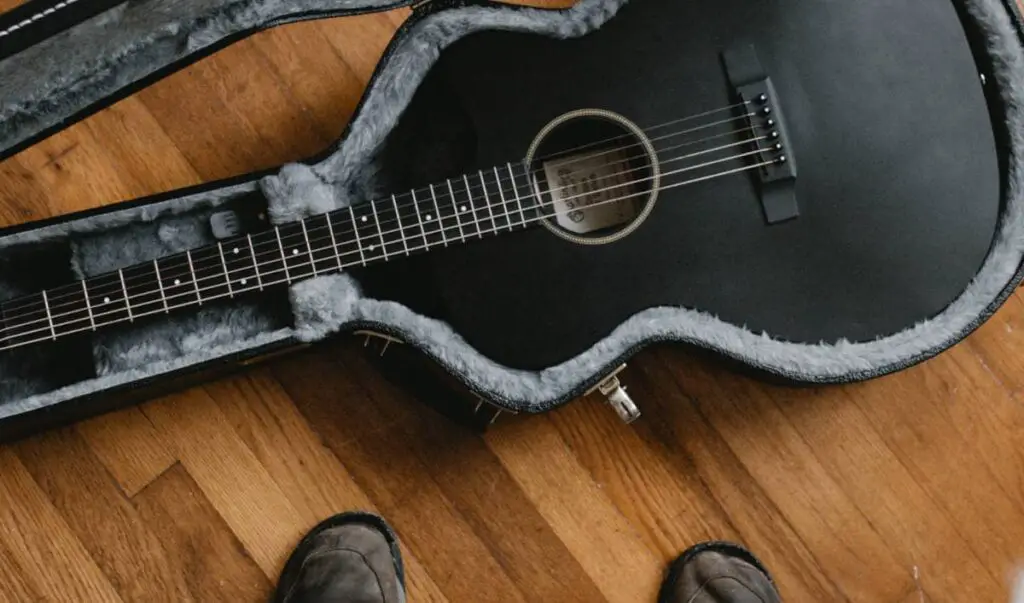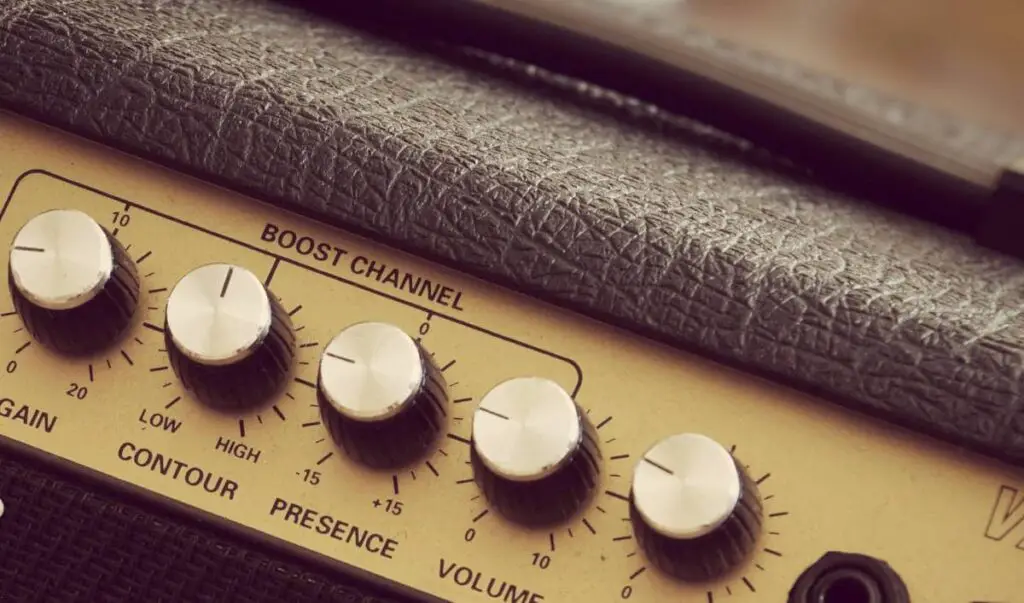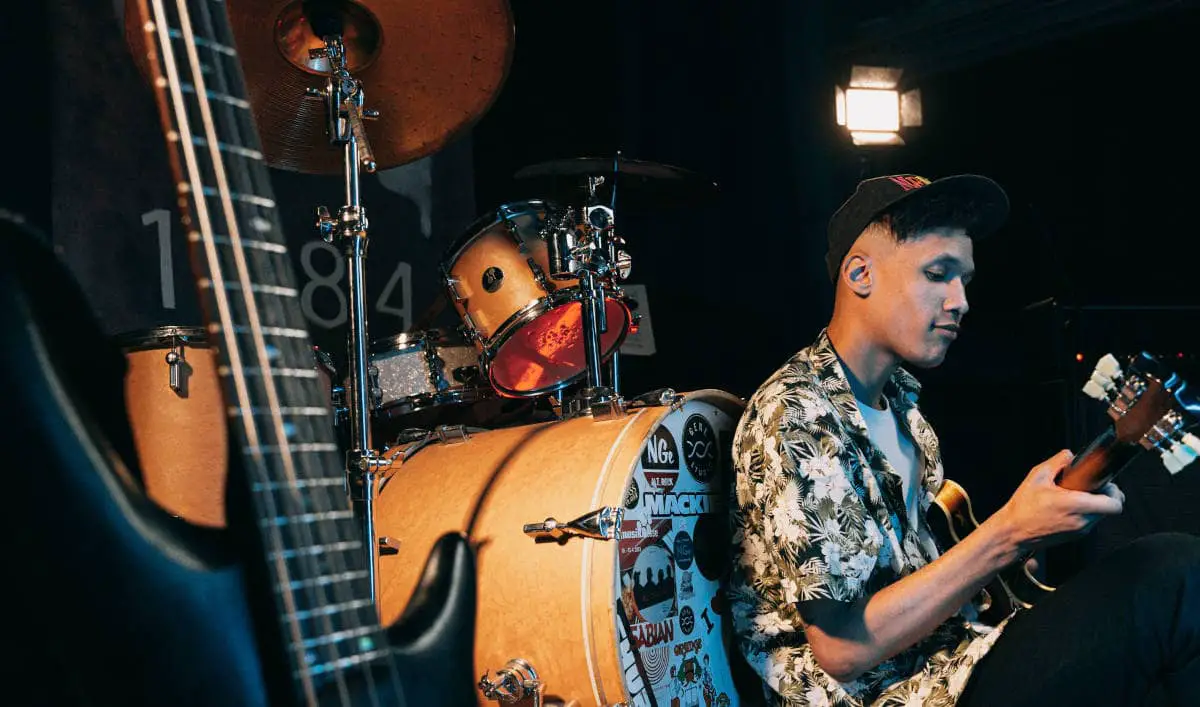In my 14+ years of playing bass, I have met countless people who have confused the bass for the guitar. Given that they look similar and are often used in the same genres, this confusion isn’t too surprising. While they are far from the same instrument, they do have their similarities. This also begs the question, can you play bass on guitar?
It turns out that this is a question with a lot of nuances to it. If you are looking to play bass on the guitar there will be some things you can do and some that you can`t. Whether it is worth it also depends on your circumstances and what you want to achieve as a musician.
Therefore, I decided to create this in-depth guide on the subject.
You will learn what the limitations of playing bass on the guitar are, and how to work around these. This way you will avoid the common mistakes people make when they try it.
Is playing the bass the same as guitar?
While the bass and guitar share some similarities, they are played differently. Playing the guitar means playing chords, melodies, and riffs while playing the bass means playing grooves. Bass is generally played one note at a time while guitars require strumming multiple strings, which requires a different playstyle.
Thus, guitarists have to change how they approach their instrument when they are looking to play bass on a guitar. This means focusing more on the low end and focusing on single notes rather than chords.
With that said, the bass and guitar share some similarities, so a lot can be carried over from one to the other.
4-string basses are tuned the same way as the 4 deepest strings on a guitar, albeit they are tuned an octave lower.
The instruments are also played similarly with one hand fretting notes and the other plucking them. While the bass has a longer scale length and wider string spacing than the guitar, the fundamentals are the same.
Thus, a lot of techniques and musical knowledge can be applied to the bass and guitar in a similar fashion. The difference lies in what roles the two instruments fill in a band and the way they are played.
Therefore, playing one of the instruments will make picking up the other easier, but it will not teach you how to play it properly.

Can you play bass on a regular guitar?
Anything that can be played on a 4-string bass can also be played on a regular guitar. However, due to the difference in pitch and tone a guitar that plays a bass part will not be able to fill the low end the same way as a bass.
It is perfectly possible to learn and play bass parts on the guitar. However, it is going to sound thinner and less groovy. This will become particularly problematic in a band setting when the bass is substituted for a guitar.
You can in part make a bass sound like a guitar, but this is vastly different from doing it the other way around. With that said, there are ways to make a normal 6-string guitar work as a bass.
Seven Nation Army by the White Stripes is a song that many believe to have an iconic bass line. In reality, the song utilizes a guitar and not a bass. This is done by using an octave pedal that shifts down the pitch of the guitar.
In my opinion, this works incredibly well. The guitar not only fills in the low end but does in fact sound like a bass too. This sound helped propel the song to become a global hit, and I recommend listening to the tone below even if you are familiar with the song:
So can a normal electric guitar play bass parts? To some extent. However, playing bass lines will require the help of tools like an octave pedal.
Acoustic guitars with pickups can utilize these effects too, but acoustic guitars without them will not be able to recreate the sound of a bass this way.
Why is bass not a guitar?
The bass is not a guitar due to the instruments filling vastly different roles in a band. The bass is based on the doubles bass, while guitars stem from plucked folk instruments such as the Lute and thus belong to a different family of instruments.
While the bass and guitar look similar on the surface, there are many noticeable differences between them. Here are the most notable ones:
- Role – If a song lacks bass, it starts to feel hollow. If a song lacks a guitar it will sound thinner at mid-ranges and will usually lack harmony. The low end and groove a bass provides are different from the chordal foundation the guitar provides.
- Tone – Playing an E4 on a bass and a guitar provides a dissimilar tone. The difference in how the two instruments sound is further increased by the bass reaching deeper than the guitar, and the guitar reaching higher. The tone and deeper range of the bass make it less suited to play chords, as these will often sound muddy.
- Size – The strings are wider apart on a bass than on a guitar. Furthermore, common acoustic guitars have a scale length of 25.5″ while basses are 34″. The difference in size has an impact on both the sound and playability of the two instruments.
- Origin – While the guitar is preceded by the lute, the bass guitar is preceded by the double bass. Thus, while the bass and guitar look similar, they belong to different families of instruments.
- Playstyle – Both the guitar and bass can be played with a pick, with fingerstyle, or be slapped. However, in most modern music guitar is played with a pick, while a bass is played fingerstyle, with a pick, or even slapped. Playing fingerstyle or slapping a bass makes it differ even more from guitar, as opposed to playing bass with a pick.

Switching from guitar to bass
If you learn to play bass on the guitar, what is it going to be like when it’s time to make the switch to bass?
First of all, it’s going to take some time to get used to the size of the bass. The longer neck and wider string spacing are going to be hard on your muscle memory and it’s going to take some time to get used to.
A less obvious point is that it’s going to take some time to get used to the tone.
This is because the bass is all about holding down a groove. Thus, how smooth you are at moving between notes, and how you pluck the strings will impact your tone, which in turn impacts how good you will sound overall.
At first, you should focus on getting used to the size of the bass and having proper finger placement.
Afterward, you should work on moving as smoothly as possible between strings and experiment with how you are plucking them. Pluck them soft, hard, fast, and slow. By noticing how this breathes life into your playing, you will be moving towards playing the bass in a more dynamic and groovy manner.
“A bass player has to think and play like a bass player. A drummer has to play and think like a drummer, and stay out of the way of the vocalist. The guitar player has to respect everybody else.”
Hunter Hayes – Multi instrumentalist
After playing both instruments myself for a long time, it is easy to spot a guitarist playing bass from a mile away. Generally, they are not out of time, but they’re certainly not grooving either.
This is why you should focus on getting used to playing the bass and learning to play dynamic grooves. This will be the difference between being a bassist, or a guitarist playing a bass.
With that said, some of the most successful bassists of all time started off as guitarists. Paul McCartney, Greg Lake, and Lemmy are just some legendary bassists that started with the 6-string.
In other words, starting off with the guitar and making the switch to bass is not only possible, but it can also make you an all-around better musician.
Bass and guitar in one instrument
There are many different types of guitars out there. Some of these work well for either filling the role of the bass or playing both the bass and guitar with one instrument.
- 8-string guitars – The standard tuning for an 8-string guitar is F#-B-E-A-D-G-B-E. It is common for 8-string players to tune the lowest F# to an E, which gives it the same low range as a 4-string bass. 8-strings are commonly seen in heavier sub-genres of metal and are used by bands such as Fear Factory and Meshuggah. Animals as Leaders is a notable progressive band that has 2 guitarists, but no bass player. By using 8-string guitars they do not suffer from a lack of low-end.
- Baritone guitars – Baritone guitars are commonly tuned B-E-A-D-F#-B. This means that they don`t have the same low range as basses or 8-string guitars. However, they are more suited for mimicking the bass than a regular 6-string. The Baritone guitar has been used by bands such as The Evens as a substitute for the bass. For more examples of bands that do not have a bassist, read this article about whether bassists are necessary.
- Double neckers – As the name implies, double neckers have one body, but two necks. They typically have two guitar necks, or one guitar and one bass neck. Notably, Geddy Lee, the bassist of Rush, used double neckers when he was required to switch between bass and guitar live.

What happens if you plug a guitar into a bass amp?
You can plug a guitar into a bass amp without any issues. As bass amplifiers are built to handle lower frequencies than the guitar is able to produce, you are at no risk of damaging it. Depending on the amp and the guitar, you can even get a suitable guitar sound when using a bass amplifier.
What plugging a guitar into a bass amp will not do, is make it sound like a bass. The 6-string will at best still sound like a guitar and a bass amp cannot substitute a bass.
Some combinations of guitars and bass amps will produce a great guitar sound. Some will sound muted and produce a weak-sounding tone without much punch to it.
A great example of a bass amp that works great for guitars is the Fender `59 Bassman.
As you can guess from the name it was originally designed to be a bass amp. Despite this, it is commonly thought of as a guitar amp nowadays.
This is due to bass amp technology at the time not being advanced enough to handle bass frequencies well. As bass amps have improved over time, the Bassman has become obsolete as a bass amp. Still, many guitarists still like its sound and use it as a guitar amp instead.
Can you play bass on a guitar amp?
It is not recommended to play bass on a guitar amp. The bass is tuned lower than what guitar amps are suited to handle. While plugging your bass into a guitar amp is safe, playing it can end up damaging the amp.
Practicing guitar on a bass amp is fine. Practicing guitar on a bass amp, on the other hand, is not something I would recommend.
Whether you will end up damaging the amp or not mainly depends on two factors:
- Volume – The louder you play, the higher the risk of damaging the amp. Thus, practicing bass with a guitar amp at low volumes at home carries significantly less risk than using it at rehearsals or concerts.
- Frequency – Bass amps are designed to drive the speaker in a different way than guitar amps. This enables them to handle deeper frequencies. Thus, the deeper you play on the bass, the higher the risk of damaging the guitar amp. Playing high melodies or solos is relatively safe, while deep and heavy grooves are more likely to be damaging.
Alternatively, there are many ways to play the bass without an amp at all. I recommend reading that article prior to plugging your bass into a guitar amp.
Conclusion
As you can see, it is possible to play bass on guitar, at least to some extent.
Whether you want to use the guitar to practice bass, use it to substitute bass in a band, or make a gradual instrument switch, it can be done. However, using the guitar to play bass parts is never going to be the same as actually playing the bass. Thus, the important part is to be aware of the limitations that you will be facing.
The biggest mistake I see musicians make is treating the bass and guitar as similar instruments. Due to the different roles, the instruments fill in a band, their tone, and how they are played it’s important to avoid this pitfall if you intend to play both.
Practicing methodically, using an octave pedal, or opting for a guitar that is tuned lower are some of the ways you can play bass on the guitar.
Another great way to get started is by starting to jam out some grooves the way a bassist would. Stay in the lowest register of your guitar, and get some inspiration by listening to your favorite bass lines.
If you get stuck, check out these 5 tips for jamming as a bassist, and incorporate them into your playing. This will help you start thinking more like a bass player, even when you are playing the 6-string.

